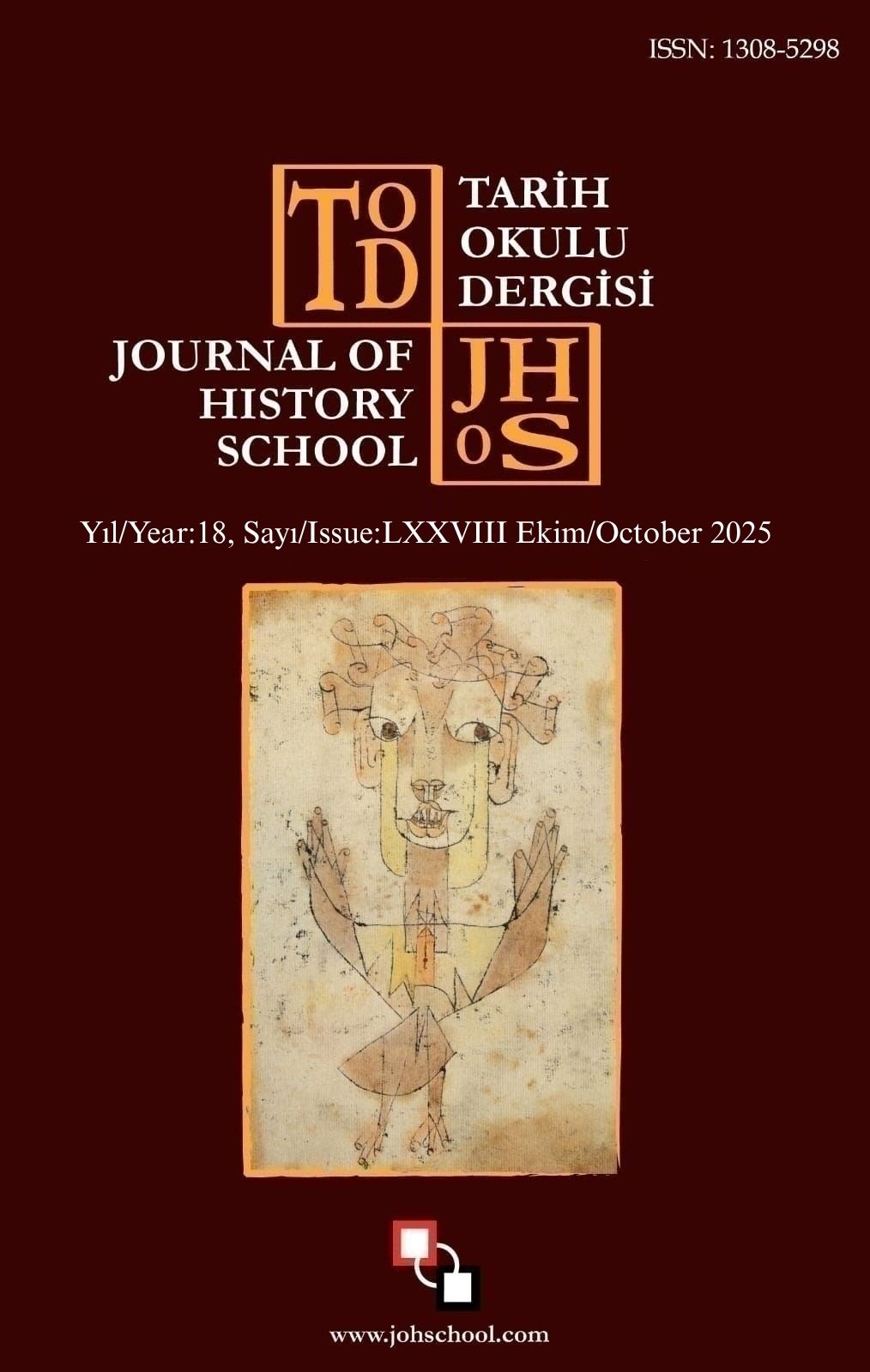BAİ JUYİ’NİN SONSUZ KEDER ŞARKISI BAŞLIKLI ŞİİRİNDE TANG XUANZONG VE YANG GUİFEİ İLİŞKİSİNİN TEMSİLİ
Author :
Abstract
İmparator Tang Xuanzong ve cariyesi Yang Guifei’in sevgi, mutluluk, ayrılık, hüzün, pişmanlık ve umut dolu hikayesi yüzyıllardır pek çok araştırmacı tarafından incelenmekte; yazarların ve sanatçıların eserlerinde işlenmektedir. Çalışma; ikilinin ilişkisini Tang döneminin en bilinen şairlerinden olan Bai Juyi’nin Sonsuz Keder Şarkısı başlıklı şiiri üzerinden ele almakta; Bai Juyi’nin imparator ve cariyesinin ilişkisini şiire nasıl yansıttığı ve şiirin içerik bakımından hangi tarihi olaylara nasıl değindiği sorusu üzerine yoğunlaşmaktadır. Edebiyat-tarih bağlamında ele alınan çalışmada, nitel araştırma deseni benimsenmiştir. Çalışmaya konu olan yüz yirmi mısradan oluşan şiir, yazar tarafından Türkçeye tercüme edilmiş, içerik analizi yöntemi ile incelenmiştir. İnceleme sonucunda şiirin içerik, anlam ve olay örgüsü bakımından üç kısımda incelenebileceği; her kısmın kendi içerisinde belirli olay, duygu-durum ayrımları olduğu; bu olaylar ve duygu-durum değişimlerinin daha çok imparatorun iç dünyası üzerinden verilmeye çalışıldığı; şairin, Çin kültürüne özgü ögeleri ve şirin kapsamı dahilindeki tarihi olayları dikkatle işlediği; bunu hem açık hem de edebi derinliği koruyan bir üslupla yaptığı tespit edilmiştir.
Keywords
Abstract
The love, happiness, separation, sorrow, regret, and hope-filled story of Emperor Tang Xuanzong and his concubine Yang Guifei has been the subject of scholarly interest for centuries; it has been addressed in the works of many writers and artists. This study examines the relationship of the couple through the poem The Song of Endless Sorrow by Bai Juyi, one of the most well-known poets of the Tang period; it focuses on how Bai Juyi reflects the relationship of the emperor and his concubine in the poem and how the poem addresses certain historical events in terms of content. In the context of literature history, qualitative research design has been adopted in the study. The poem, consisting of one hundred and twenty couplets, which is the subject of the study, has been translated into Turkish by the author and analyzed using content analysis method. As a result of the examination, it has been observed that the poem can be divided into three distinct sections; each marked by specific emotional and narrative shifts; primarily conveyed through the figure of the emperor. Furthermore, Bai Juyi’s work is found to be rich in cultural and historical references, articulated through a lucid and evocative poetic style that remains accessible while retaining literary depth.





